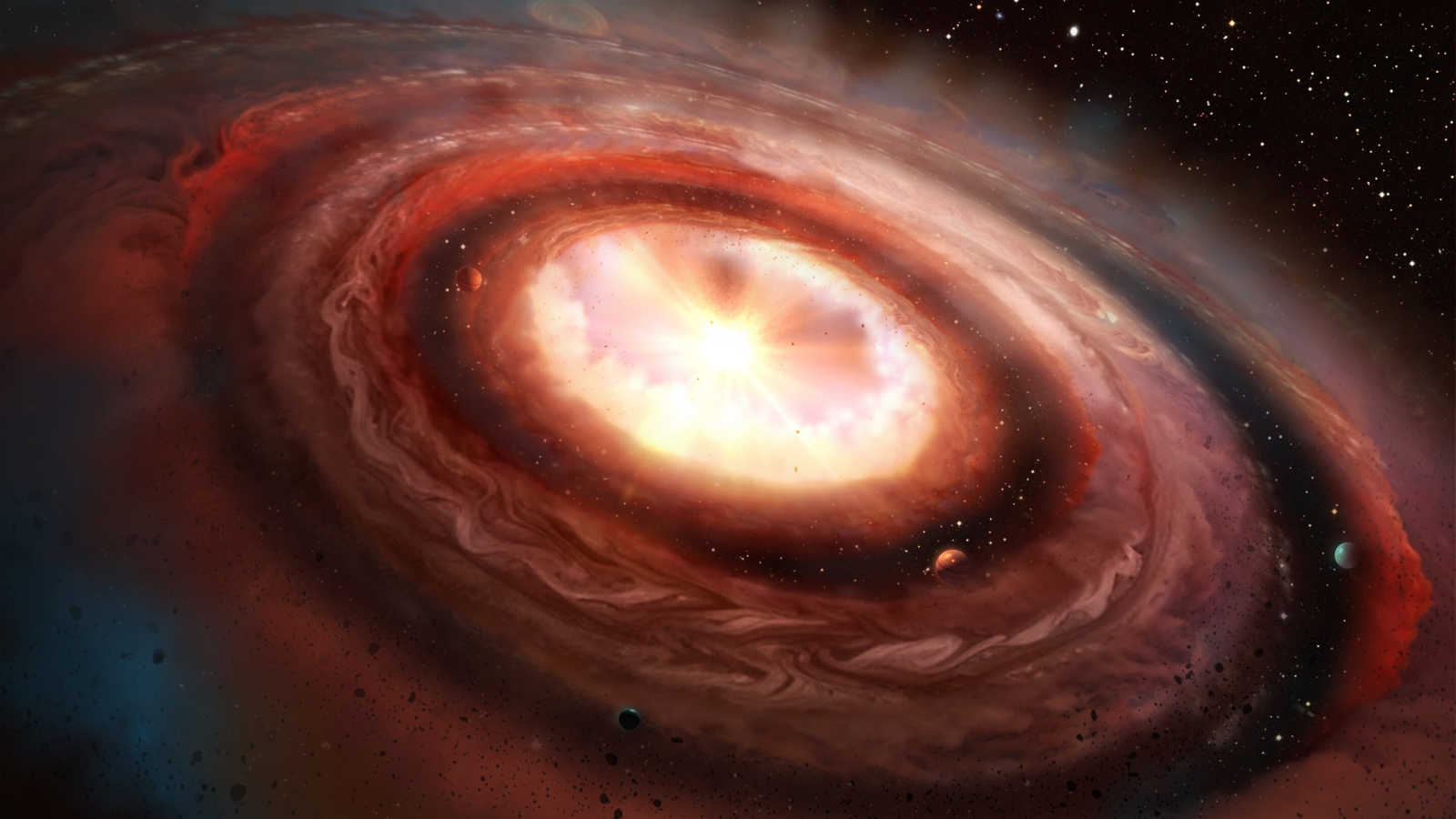Have astronomers found the 'secret recipe' for rapid planet growth?
"This is the first time a simulation has traced the process whereby fine dust grows into giant planets."

Researchers may have discovered the secret ingredient of planet growth, which causes some worlds to grow rapidly in disks of gas and dust around infant stars. The model could be of specific value in understanding the growth of the solar system's giant planets.
Scientists have a fairly good understanding of how the rocky inner planets of the solar system, Mercury, Venus, Earth and Mars, formed and evolved. But the current model of collisions and gathering of asteroid-like bodies called "planetesimals" and the accretion of gas over millions of years leaves a lot to be explained when it comes to the formation of the gas giants Jupiter and Saturn and the ice giants Neptune and Uranus.
All these giants seem to have formed too far out from the sun to grow so massive, with the growth of the outer ice giants being particularly puzzling. Jupiter is 15 times further away from the sun than our planet, and Neptune is 30 times farther away from our star than Earth.
To help solve this planetary puzzle, a team of scientists from the ORIGINS Excellence Cluster, the Max Planck Institute for Solar System Research (MPS), and the Ludwig Maximilian University of Munich (LMU) have developed a new model of planet evolution that could account for these apparent discrepancies.
The scientists say their model is the first to incorporate all the physical processes needed for planet formation.
"This is the first time a simulation has traced the process whereby fine dust grows into giant planets," team member Tommy Chi Ho Lau, an LMU doctoral candidate, said in a statement.
The simulation performed by the researchers suggests that disturbances in the disk of gas and dust around infant stars, called "protoplanetary disks," can trigger the rapid formation of multiple gas giants.
Get the Space.com Newsletter
Breaking space news, the latest updates on rocket launches, skywatching events and more!
Their results seem to line up well with recent observations of young extrasolar planets or "exoplanets" and may reveal that giant planets can form much faster and much more efficiently than currently thought.
Related: Evidence of water found in atmosphere of mysterious 'metal god of war' exoplanet
Even giant planets start out small
Young stars are born when overdense patches form in vast clouds of interstellar gas and dust. As this gas clump accumulates material, it eventually collapses and gives birth to a "protostar."
This progenitor stellar body continues to gather material until its mass is sufficient enough to generate the pressure and temperatures at its core to trigger the nuclear fusion of hydrogen to helium, the process that defines a star's "main sequence" lifetime.
Material that remains in this newborn star's prenatal cocoon flattens out as it swirls around the star, creating a protoplanetary disk. As the name suggests, it is from this disk of gas and dust that the planets emerge.
The team's model suggests that millimeter-sized dust particles accumulate aerodynamically in the turbulent protoplanetary disk. This perturbation traps dust and prevents it from heading toward the central infant star. This spurs an accumulation of planetary "building blocks" in a relatively small region of the protoplanetary disk. These are just the conditions needed for a planet to form.
"When a planet gets large enough to influence the gas disk, this leads to renewed dust enrichment farther out in the disk," Til Birnstiel, Professor of Theoretical Astrophysics at LMU and member of the ORIGINS Cluster of Excellence said. "In the process, the planet drives the dust – like a sheepdog chasing its herd – into the area outside its own orbit."
This could lead to the formation of planets as far away from their star as 200 times the distance between Earth and the sun, more than enough to explain the formation of the solar system's giant planets around 4.5 billion years ago.
The team's model also implies that the solar system stopped birthing planets after Neptune simply because planetary building blocks had been exhausted.
The results generated by the team's simulations seem to match observations of young planetary systems made by the Atacama Large Millimeter/submillimeter Array (ALMA), a collection of 66 radio antennas located in northern Chile.
Not only could this research help us understand the birth and evolution of giants in our own planetary system, but it could also give astronomers hints as to the diversity of exoplanets in the wider Milky Way galaxy.
The team's research was published in the journal Astronomy & Astrophysics.
Join our Space Forums to keep talking space on the latest missions, night sky and more! And if you have a news tip, correction or comment, let us know at: community@space.com.

Robert Lea is a science journalist in the U.K. whose articles have been published in Physics World, New Scientist, Astronomy Magazine, All About Space, Newsweek and ZME Science. He also writes about science communication for Elsevier and the European Journal of Physics. Rob holds a bachelor of science degree in physics and astronomy from the U.K.’s Open University. Follow him on Twitter @sciencef1rst.









